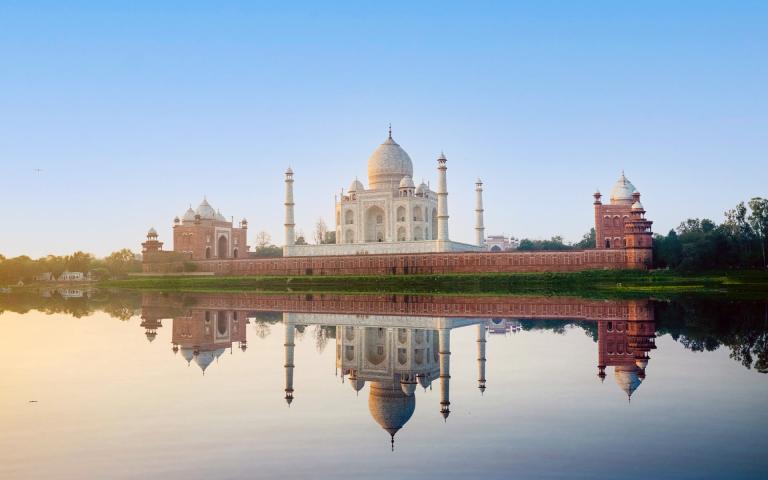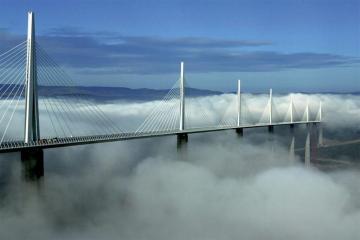Boat travel—especially on a cruise—offers a distinctive and all-inclusive vacation. Still, there are benefits and drawbacks to take into account, much as with any kind…


Agra, a city steeped in historical significance and cultural opulence, graces the banks of the Yamuna river in the northern Indian state of Uttar Pradesh. Situated around 230 kilometers southeast of New Delhi, the national capital, and 330 kilometers west of Lucknow, the state capital, Agra boasts a prime location in the center of India. Home to approximately 1.6 million residents, Agra emerges as a prominent urban center in Uttar Pradesh, ranking as the fourth-most populous city in the state and the twenty-third in the entire nation.
The city’s significance in Indian history is unmistakable, with its remarkable historical era commencing during the reign of Sikandar Lodi. Nevertheless, it was during the Mughal Empire that Agra reached new heights, embracing its opulent era in the early 16th century. As the heart of the Mughal Empire, Agra emerged as the premier city of the Indian subcontinent, acting as the majestic seat of power for renowned Mughal emperors such as Babur, Humayun, Akbar, Jahangir, and Shah Jahan. In this remarkable period, Agra blossomed into a vibrant hub of knowledge, creativity, trade, and spirituality, showcasing the creation of some of India’s most celebrated architectural masterpieces.
Among the architectural wonders that adorn Agra’s skyline, the Taj Mahal reigns supreme as the city’s most exquisite treasure. Built between 1632 and 1648 by Emperor Shah Jahan in honor of his cherished wife Mumtaz Mahal, this stunning mausoleum of white marble stands as a symbol of everlasting love and a remarkable achievement in Mughal architecture. The Taj Mahal, accompanied by the magnificent Agra Fort, stands as a testament to timeless beauty, attracting millions of visitors from around the world annually.
The Agra Fort, a stunning architectural gem, stands as a testament to the city’s regal heritage. This magnificent red sandstone fortress, begun by Emperor Akbar and finished by his successors, exemplifies the splendor of Mughal military architecture, while elegantly accommodating palaces, audience halls, and mosques within its impressive walls. The fort complex provides an exquisite insight into the lavish lifestyle of the Mughal rulers and the detailed artistry of the period.
Alongside these iconic landmarks, Agra boasts Sikandra, the magnificent mausoleum of Emperor Akbar, showcasing a harmonious fusion of Hindu and Islamic architectural elements in an exquisite manner. These historical sites elegantly recount the tale of Agra’s illustrious era, when it stood as the heart of one of the globe’s most formidable empires.
The waning of the Mughal Empire in the late 18th century signified a pivotal moment in Agra’s illustrious history. The city initially succumbed to the Marathas, subsequently coming under the dominion of the East India Company, marking the conclusion of its reign as an imperial capital. Nevertheless, this transformation did not lessen Agra’s rich cultural and historical significance. Instead, it set the stage for the city’s transformation into a sophisticated urban hub, harmoniously merging its opulent heritage with cutting-edge development.
Since gaining independence, Agra has experienced remarkable evolution, emerging as an industrial hub while preserving its allure as a top-tier tourist attraction. The city’s economy has evolved, with tourism taking center stage alongside esteemed traditional industries like leather goods, footwear manufacturing, and exquisite handicrafts. Agra’s industrial landscape boasts a harmonious blend of expansive enterprises and a multitude of smaller establishments, enhancing its economic vibrancy.
The tourism sector in Agra is exceptionally vibrant, with the city graciously hosting over 9.5 million visitors in 2019. The arrival of numerous visitors has catalyzed the creation of exceptional hospitality establishments, featuring exquisite hotels and resorts. The presence of Asia’s largest spa, Kaya Kalp – The Royal Spa at the ITC Hotel Mughal, showcases the city’s dedication to providing exquisite experiences for both tourists and locals.
Agra experiences a climate that boasts gentle winters, sweltering and arid summers, and a refreshing monsoon season, embodying the essence of the North Indian plains. This climatic pattern has elegantly shaped the city’s culture, architecture, and way of life. The soaring temperatures of summer have traditionally inspired the creation of sophisticated cooling methods in architecture, while the monsoon season bestows a refreshing and revitalizing touch to the area.
The culinary landscape of Agra is graced by Mughlai cuisine, a splendid legacy of its imperial past. Exquisite, flavorful dishes crafted with aromatic spices and often showcasing premium meat and dairy products are hallmarks of this culinary tradition. The culinary scene in Agra captivates visitors while also contributing profoundly to the local economy and community dynamics.
In the realm of urban development and civic management, Agra has achieved remarkable progress in recent years. The city’s performance in the Swachh Survekshan has experienced an impressive transformation, soaring from 263rd place in 2017 to an outstanding 16th nationwide and an exceptional 2nd in Uttar Pradesh in 2020. This advancement showcases the dedicated collaboration between local authorities and citizens to elevate the city’s elegance and overall quality of life.
Furthermore, Agra has distinguished itself as a frontrunner in the execution of sophisticated urban initiatives. In rankings unveiled by the Ministry of Housing and Urban Affairs, Agra achieved the pinnacle position due to its remarkable progress and completion rate of Smart City projects from October 2019 to March 2020. This remarkable achievement highlights the city’s dedication to harnessing cutting-edge technology and innovative solutions to enhance its urban infrastructure and services.
Currency
Founded
Calling code
Population
Area
Official language
Elevation
Time zone
India, the most populous nation in the world and the seventh-largest by land area, is a land of extraordinary diversity and a captivating history nestled in South Asia. As of 2023, India has elegantly surpassed China, boasting…
Bangalore, officially known as Bengaluru, stands as the capital and largest city of Karnataka, a southern Indian state. Positioned strategically on the Deccan Plateau, this bustling metropolis boasts a population…
Chennai, the dynamic capital of Tamil Nadu, displays India’s profound cultural legacy and swift modernity. Located on the Coromandel Coast of the Bay of Bengal, this city has a population of around 7.1 million, ranking it as the sixth-most…
Goa, a little yet dynamic state on India’s southern coast, is an enchanting amalgamation of natural splendor, historical richness, and cultural variety. Located in the Konkan area, this seaside beauty has a population of around…
New Delhi, the capital of India, is a dynamic city located inside the National Capital Territory of Delhi (NCT). New Delhi, with a population over 250,000, functions as the nucleus of Indian governance and epitomizes…
Mumbai, the capital of Maharashtra, is India’s financial hub and most populous city, with an estimated population of 12.5 million inhabitants. This dynamic city is the core of the Mumbai Metropolitan Region, the sixth-largest…
Jaipur, the capital and biggest city of Rajasthan, exemplifies India’s profound cultural legacy and contemporary urban advancement. As of 2011, with a population of 3.1 million, it is the ninth most populated city in the nation. Located 268 kilometers…
Kolkata, originally referred to as Calcutta, serves as the capital and most populous city of the Indian state of West Bengal, located on the eastern bank of the Hooghly River. Kolkata has an estimated population of 4.5…
Hyderabad, the capital and biggest city of Telangana, is a dynamic metropolis that harmoniously integrates ancient past with contemporary advancement. Located in the northern region of Southern India, this extensive metropolitan hub…
Ahmedabad is the most populous city in Gujarat, India, with a population of 8,854,444 as of 2024, establishing it as a prominent urban hub in the nation. This dynamic city, located along the Sabarmati River, functions as…
Boat travel—especially on a cruise—offers a distinctive and all-inclusive vacation. Still, there are benefits and drawbacks to take into account, much as with any kind…

From Rio's samba spectacle to Venice's masked elegance, explore 10 unique festivals that showcase human creativity, cultural diversity, and the universal spirit of celebration. Uncover…

The 7 Wonders of the 21st Century feature amazing successes redefining human creativity and engineering capability. From the calm Temple of Buddha's Origin in Leshan,…

Discover the vibrant nightlife scenes of Europe's most fascinating cities and travel to remember-able destinations! From the vibrant beauty of London to the thrilling energy…

From Alexander the Great's inception to its modern form, the city has stayed a lighthouse of knowledge, variety, and beauty. Its ageless appeal stems from…

© All Rights Reserved. By Travel S Helper